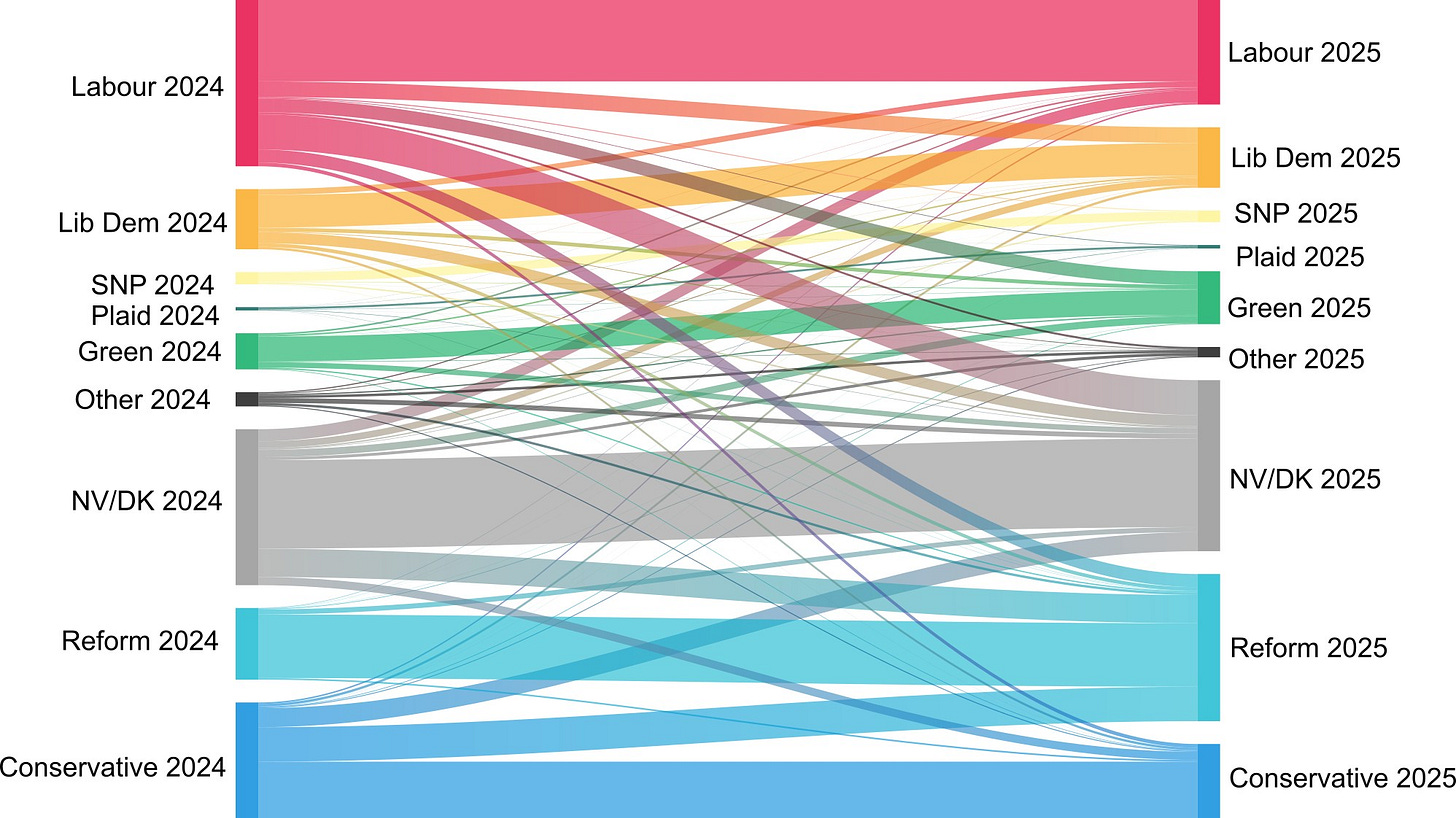Bloc Parties
What the latest data shows us about electoral trends
The British Electoral Study are gearing up to launch the results of their latest panel, based on research done in May of this year. This gives us something more than the usual snapshot polls, as it looks more closely at how voters move over time – rather than just their opinions today. It shows us the shifts that lie under the moving headline figures and indicates why they are moving in the way they are. From this, we start to see a picture of how trends might develop towards the next election, where votes can be played for, and how the state of the parties might change.
Looking at the flow of votes, something obvious stands out: the public has split into two blocs of left and right, with a buffer of Don’t Knows and Non-Voters in the middle. From last July to this March, relatively few voters have crossed that divide, with limited numbers of switches from Labour to Reform or Conservatives, or vice versa. Instead, most movement has occurred within these blocs, or with voters falling into the pit of indecision in the middle.
The rise of Reform has been driven not by Labour voters deserting the government over immigration, but by large inflows from the Conservatives and the DK/NVs. The Labour drop, by contrast, has primarily benefited the Greens and the Lib Dems, with a further large chunk falling into the DKs. So far, very few voters have made the direct jump from Farage to Starmer.
Keep reading with a 7-day free trial
Subscribe to Joxley Writes to keep reading this post and get 7 days of free access to the full post archives.



